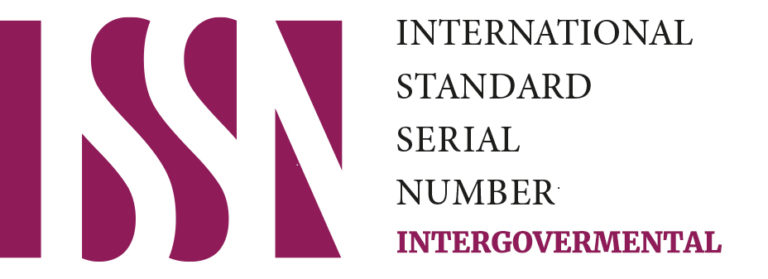ABSTRACT
The study evaluated the effectiveness of tailored Integrated Vector Management (IVM) in controlling Aedes aegypti and Aedes albopictus mosquito populations and managing dengue fever in Tharu village, Chitwan, Nepal. The IVM strategy, informed by the Ecosystem-Based Management (EBM), Health Belief Model (HBM), and Social-Ecological Model (SEM), combined larviciding, source reduction, environmental sanitation, and community education. Mosquito populations were monitored using BG-Sentinel traps, and resident knowledge and practices were assessed through pre- and post-intervention surveys. Results demonstrated significant reductions in Aedes mosquito populations across all locations (e.g., Aedes aegypti near the buffalo shed declined from 18.75 to 7.00, p=0.002). Concurrently, dengue awareness among residents significantly improved (10% to 60%), and community involvement in control programs surged (30% to 90%). Despite challenges like insecticide resistance and logistical barriers, this research validates IVM as an effective and scalable model for sustainable dengue prevention in resource-limited settings, highlighting the critical role of local participation and multi-sectoral collaboration.
INTRODUCTION
Dengue fever, a rapidly escalating arboviral disease, poses a significant global public health challenge, with its incidence dramatically increasing in tropical and subtropical regions worldwide.1|2 Transmitted primarily by the highly adaptable Aedes aegypti and Aedes albopictus mosquitoes,3|4 dengue manifests in a spectrum of clinical severities, from mild febrile illness to life-threatening conditions like Dengue Hemorrhagic Fever and Dengue Shock Syndrome.5 This alarming rise is largely attributed to factors such as rapid urbanisation, increased global travel, climate change creating favourable breeding conditions, and the widespread proliferation of mosquito breeding sites.6|7
In Nepal, the burden of dengue has intensified remarkably over the past two decades.8 Since its first reported case in 20049, the disease has spread from the southern Terai plains to central and western parts of the country, including the densely populated Kathmandu Valley 10
Nepal has seen a concerning rise in dengue cases, spreading from central/western regions (2011-2015) to cover all 77 districts, driven by urbanisation, travel, and climate change, with particularly severe outbreaks from 2016-2019, including 14,000 cases across 68 districts in 2019.11 Despite COVID-19 complicating 2020 surveillance, the issue persisted, culminating in over 54,000 cases and at least 88 deaths in 2022, and 51,243 cases with 20 deaths in 2023, marking the first time the disease occurred in consecutive years.12|13 The upward trend continued into 2024, with 7,640 cases and five deaths across 75 districts in September, peaking with 6,459 cases in August, and ending the year with 41,865 infections and 15 deaths across 76 districts.14|15
Communities in rural settings, exemplified by Tharu village in Chitwan District, Nepal, are particularly vulnerable, where unique socio-economic, cultural, and environmental factors, including extensive waterlogged rice fields, inadequate sanitation, and traditional agricultural practices, create ideal habitats for Aedes mosquitoes and exacerbate the risk of transmission.16|17 Moreover, limited access to robust healthcare services in such remote areas often compounds the severity and mortality associated with dengue infections.18|19
Traditional vector control methods, such as widespread insecticide spraying and basic community clean-up campaigns, have proven insufficient in sustainably curbing Aedes mosquito populations and checking dengue transmission in these complex rural environments.20 These approaches frequently lack crucial community engagement and fail to address the underlying ecological and behavioural drivers of mosquito proliferation.21
The study evaluates the effectiveness of a tailored Integrated Vector Management (IVM) strategy implemented in Tharu village, Chitwan, Nepal. By adopting a holistic approach encompassing larviciding, source reduction, environmental sanitation, and community education, this study aims to demonstrate a scalable and sustainable model for controlling Aedes mosquito populations and managing dengue fever.
Methods
This study employed a comprehensive and tailored Integrated Vector Management (IVM) approach to rigorously evaluate its effectiveness in controlling Aedes aegypti and Aedes albopictus mosquito populations and subsequently managing dengue fever. The research was specifically designed to address the unique socio-economic, cultural, and environmental challenges prevalent in the study area, Tharu village, located in Ward No. 1 of Madi Municipality, Chitwan District, Nepal. This community, home to approximately 2,685 residents across 542 households, faces particular vulnerabilities such as waterlogged rice fields, inadequate sanitation, and traditional agricultural practices that create conducive environments for mosquito breeding. The implemented IVM strategy was multifaceted, encompassing essential components such as targeted larviciding, extensive source reduction efforts to eliminate breeding sites, community-wide environmental sanitation initiatives, and robust community education programs delivered through posters, pamphlets, and interactive sessions to foster behavioural change. Furthermore, biological control measures, specifically the introduction of larvivorous fish in ponds, were integrated into the intervention.
Mosquito populations were systematically monitored using efficient BG-Sentinel traps, placed at three strategic locations within the village near a buffalo shed, adjacent to the pond, and in a paddock close to a house allowing for precise measurement of intervention outcomes through a comparative analysis of samples collected during both pre-monitoring and post-monitoring phases over four weeks. The primary focus of this entomological surveillance was on Aedes aegypti and Aedes albopictus. Complementing this, a resident survey was conducted among approximately 20 randomly selected households from the Tharu community, utilising a 25-question structured questionnaire administered both before and after the intervention to comprehensively assess changes in local mosquito control knowledge and practices. For data analysis, quantitative data derived from mosquito counts and health records were processed using Genstat 20.1 version, with a paired t-test employed to compare the statistical significance of pre- and post-intervention results. Concurrently, qualitative data obtained from the resident surveys were subjected to thematic analysis to identify and understand shifts in community knowledge and practices related to mosquito control.
The design and implementation of the IVM strategy were informed by several key theoretical models:
Ecosystem-Based Management (EBM) Framework: The interventions focused on managing the health of the local ecosystem, specifically by implementing source reduction and environmental sanitation efforts. These efforts directly applied EBM principles to eliminate mosquito breeding sites and address the root causes of proliferation within the natural and human-modified environment.
Health Belief Model (HBM): Pre- and post-intervention surveys were conducted to assess changes in community members’ knowledge, perceived susceptibility to dengue, perceived severity of the disease, perceived benefits of preventive actions, and perceived barriers to adopting these actions. This assessment directly utilised the constructs of the HBM to understand and measure behavioural change.
Social-Ecological Model (SEM): The multi-faceted IVM strategy integrated community engagement, education, and multi-sectoral collaboration. These components addressed factors at individual (knowledge, practices), interpersonal (community participation), community (sanitation campaigns), and policy (potential for scaling up) levels, consistent with the layered approach of the SEM.
One Health Approach: The study considered the interconnectedness of human health (dengue incidence), animal health (buffalo sheds as mosquito habitats), and environmental health (waterlogged fields, sanitation, larvivorous fish introduction). This holistic perspective, central to the One Health Approach, guided the design of integrated interventions that transcended traditional sectoral boundaries.
Theory of Change (ToC): The IVM strategy was structured with a clear logical pathway from inputs (e.g., resources for larvicides, educational materials), through activities (e.g., larviciding, community meetings), to expected outputs (e.g., reduced mosquito counts, increased awareness), immediate outcomes (e.g., improved practices, community involvement), and ultimately, the long-term impact of reduced dengue incidence. The ToC provided a framework for monitoring and evaluating this pathway.
Results
Integrated Vector Management (IVM) yielded significant positive results, notably impacting both entomological indicators and community-level knowledge, practices, and engagement. Detailed analysis revealed substantial reductions in Aedes aegypti populations across monitored sites; specifically, mosquito counts near the buffalo shed declined from an average of 18.75 ± 1.49 (pre-intervention) to 7.00 ± 1.35 (post-intervention) (p = 0.002, Cohen’s d = 3.65), while populations near the pond saw a reduction from 43.00 ± 10.40 to 9.25 ± 1.89 (p = 0.045, Cohen’s d = 1.50), and those around the paddock close to the house decreased from 29.00 ± 5.31 to 8.50 ± 2.06 (p = 0.051, Cohen’s d = 1.45). Parallel significant reductions were observed for Aedes albopictus populations, including a decrease from 13.50 ± 0.65 to 3.00 ± 1.08 (p = 0.008, Cohen’s d = 2.70) near the buffalo shed, from 22.25 ± 3.47 to 9.00 ± 1.08 (p = 0.043, Cohen’s d = 1.55) near the pond, and from 26.25 ± 2.21 to 10.50 ± 1.94 (p = 0.005, Cohen’s d = 3.00) around the paddock (Table 1).
Table 1: Aedes mosquito population reductions (Mean ± SD) Pre vs. Post IVM intervention by location.
These impressive entomological outcomes were primarily attributed to the combined effects of comprehensive larviciding, extensive source reduction efforts, and the effective integration of biological control measures, such as the introduction of larvivorous fish. The significant reductions in Aedes mosquito populations across all locations demonstrate the effectiveness of environmental management, aligning with Ecosystem-Based Management (EBM) principles and the integrated perspective of the One Health Approach.
Table 2: Changes in community knowledge and practices (Pre vs. Post IVM intervention) (n=20).
Complementing these ecological successes, the resident surveys unveiled remarkable improvements in community awareness and practices: knowledge of Aedes mosquitoes as dengue vectors surged from 10% to 60%, and awareness of local mosquito control programs jumped from 35% to 100%. Adoption of preventive practices also saw notable increases, with mosquito net usage rising from 70% to 90% and repellent use from 30% to 80%. Critically, community involvement in mosquito control programs experienced a substantial surge from 30% to 90%, with willingness to participate actively in future initiatives increasing from 30% to 85% (Table 2).
Table 3: Perceived barriers and suggested improvements (Pre vs. Post IVM intervention) (n=20).
Furthermore, the perception of current control methods being “very effective” dramatically increased from 20% to 90%, and while “lack of time” as a barrier significantly decreased from 90% to 20%, a nuanced shift indicated an increase in “lack of awareness” as a perceived barrier (from 10% to 80%), suggesting enhanced understanding of the scope of challenges. Concurrently, suggestions for improvements increasingly favoured waste management (from 30% to 85%), more awareness programs (from 15% to 90%), and greater community participation (from 5% to 85%) (Table 3). Overall, the educational components of the IVM program, delivered through various outreach methods, proved instrumental in driving these positive behavioural changes and fostering a more engaged community. Increased dengue awareness (10% to 60%) and surging community involvement (30% to 90%) (Table 3) indicate positive behavioural changes, consistent with the constructs of the Health Belief Model (HBM) and the multi-level interventions suggested by the Social-Ecological Model (SEM).
Discussion
The study rigorously evaluated the effectiveness of a tailored Integrated Vector Management (IVM) strategy in controlling Aedes aegypti and Aedes albopictus mosquito populations and managing dengue fever within the unique socio-environmental context of Tharu village, Chitwan, Nepal. The findings demonstrate significant and statistically substantial reductions in both Aedes aegypti and Aedes albopictus populations across all monitored locations following the IVM intervention. Concurrently, the study observed remarkable improvements in community dengue awareness, the adoption of preventive practices, and the level of community involvement in mosquito control initiatives. These successes underscore the potential of comprehensive, community-engaged IVM approaches in mitigating the entomological and epidemiological burden of dengue in resource-limited rural settings.
The observed entomological outcomes, characterised by marked declines in mosquito densities, are highly consistent with findings from other studies on integrated vector control programs globally. Studies have demonstrated significant Aedes population reductions through IVM components like larviciding and source reduction in similar ecological or socio-economic settings.22|23 The strategic application of larvicides, coupled with diligent source reduction efforts directly targeting mosquito breeding habitats, proved crucial in breaking the transmission cycle, a mechanism well-documented in vector control literature.24|25
Furthermore, the integration of biological control measures, such as the introduction of larvivorous fish, provided an ecologically sound and sustainable supplementary method for larval control, echoing successes reported in other regions. These findings collectively reinforce the notion that sustained reduction in vector populations is achievable through diversified and integrated efforts, aligning with broader calls for comprehensive vector management strategies to overcome challenges like insecticide resistance and environmental impact.26|27 The successful reduction of mosquito populations highlights the importance of an ecosystem-based approach, consistent with the Ecosystem-Based Management (EBM) framework, and emphasises the interconnectedness of human, animal, and environmental health as advocated by the One Health Approach in achieving these ecological successes.
Beyond the entomological impact, a critical strength of this IVM strategy was its profound effect on community knowledge, practices, and engagement. The significant increase in dengue awareness, the adoption of personal protective measures like mosquito nets and repellents, and the surge in community participation in control programs highlight the transformative power of the educational component. This finding resonates strongly with studies emphasising the importance of community mobilisation and health education in vector-borne disease prevention.28|29|30 It suggests that empowering communities with knowledge and practical skills can lead to sustained behavioural change, which is paramount for the long-term success of vector control initiatives, especially where public health infrastructure may be limited. The observed shift in perceived barriers from “lack of time” to “lack of awareness” also indicates that the intervention effectively addressed logistical barriers, making community participation more feasible and highlighting the need for continuous, targeted education, a common recommendation in public health interventions.
Despite these considerable achievements, the study encountered several challenges that merit discussion and align with known obstacles in public health interventions. The persistent issue of resistance to chemical insecticides, as observed in this context, poses a significant threat to the longevity of chemical control components within IVM, necessitating continuous monitoring and the exploration of alternative, non-chemical methods. Logistical difficulties in reaching remote areas underscore the practical complexities of implementing widespread public health interventions in geographically challenging terrains, a common impediment reported globally. Moreover, limited healthcare access within Tharu village presented a barrier to the timely diagnosis and treatment of dengue cases, indirectly impacting overall disease management, a systemic issue well-documented in developing countries.31|32 These challenges emphasise that while IVM is highly effective, its sustainability and broader impact are intricately linked to strengthening overall public health initiatives, including capacity building, fostering robust intersectoral collaboration, and improving healthcare infrastructure. While effective, challenges such as insecticide resistance underscore the need for continuous adaptation within the Ecosystem-Based Management (EBM) and One Health Approach frameworks to address evolving environmental and biological factors.
The study contributes valuable empirical evidence to the global discourse on vector-borne disease management, particularly demonstrating the efficacy and scalability of IVM in resource-constrained environments like rural Nepal. The study provides a pragmatic and reproducible model for mitigating dengue outbreaks in similar rural and peri-urban communities globally. By prioritising a blend of technical interventions with strong community-driven approaches, the study ensures both the sustainability and cultural relevance of the implemented strategies, offering practical solutions to reduce the escalating burden of dengue fever. The findings further underscore the indispensable role of local participation and multi-sectoral collaboration in achieving lasting success in public health endeavours. As global challenges such as climate change and rapid urbanisation continue to favour the proliferation of vector-borne diseases, adopting proactive, integrated approaches like the one presented herein will be pivotal for enhancing global resilience against these public health threats. The Theory of Change (ToC) framework helped to map the logical pathway from interventions to outcomes, and reflecting on its application reveals both adherence to the envisioned steps and highlights areas for future refinement in similar public health initiatives.
CONCLUSION
The study conclusively demonstrates the significant effectiveness of a tailored Integrated Vector Management (IVM) strategy in reducing Aedes aegypti and Aedes albopictus mosquito populations and actively managing dengue fever in the rural context of Tharu village, Chitwan, Nepal. The intervention led to substantial entomological reductions, alongside remarkable improvements in community awareness, the adoption of preventive practices, and unprecedented levels of community involvement in mosquito control initiatives. These successes underscore the critical role of comprehensive, multi-component IVM approaches, which integrate environmental management, biological control, and robust educational components, in achieving tangible public health outcomes. The study validates IVM as an effective and scalable model for sustainable dengue prevention, demonstrating the practical utility of integrating the Ecosystem-Based Management, Health Belief Model, Social-Ecological Model, One Health Approach, and Theory of Change frameworks in public health interventions in resource-limited settings.
Despite inherent challenges such as low sample size, the potential for insecticide resistance, and logistical complexities in remote areas, the findings provide compelling evidence that IVM offers a highly effective and scalable model for sustainable dengue prevention and control in resource-limited settings. The study emphasises the indispensable value of local participation and intersectoral collaboration, proving that community empowerment is pivotal for the long-term success and cultural relevance of vector control programs. As vector-borne diseases continue to pose a growing global health threat amplified by climate change and urbanisation, the adoption of such proactive, integrated strategies is not merely beneficial but essential for enhancing global resilience against future public health challenges.
REFERENCES
- ‘Dengue and Severe Dengue’, accessed 11 August 2024, https://www.who.int/health-topics/dengue-and-severe-dengue.
- Laxmi Bhatt and Deepa Pandey, ‘Review on Dengue Fever’, International Journal of Multidisciplinary Educational Research 12, no. 7 (2023): 74–86.
- Duane Gubler, ‘Dengue, Urbanization and Globalization: The Unholy Trinity of the 21st Century’, International Journal of Infectious Diseases 16 (2012): e2.
- Scott B Halstead, ‘Dengue’, The Lancet 370, no. 9599 (2007): 1644–52.
- Maria G Guzman and Eva Harris, ‘Dengue’, The Lancet 385, no. 9966 (2015): 453–65.
- Annelies Wilder-Smith and Duane J Gubler, ‘Geographic Expansion of Dengue: The Impact of International Travel’, Medical Clinics of North America 92, no. 6 (2008): 1377–90.
- Korine N Kolivras, ‘Changes in Dengue Risk Potential in Hawaii, USA, Due to Climate Variability and Change’, Climate Research 42, no. 1 (2010): 1–11.
- Rijal, Komal Raj, Bipin Adhikari, Bindu Ghimire, Binod Dhungel, Uttam Raj Pyakurel, Prakash Shah, Anup Bastola, Binod Lekhak, Megha Raj Banjara, and Basu Dev Pandey. ‘Epidemiology of Dengue Virus Infections in Nepal, 2006–2019’. Infectious Diseases of Poverty 10 (2021): 1–10.
- Dinesh Subedi and Andrew W Taylor-Robinson, ‘Epidemiology of Dengue in Nepal: History of Incidence, Current Prevalence and Strategies for Future Control’, Journal of Vector Borne Diseases 53, no. 1 (2016): 1–7.
10.‘Annual_Report.Pdf’, accessed 12 August 2024, http://dohs.gov.np/wp-content/uploads/Annual_Report.pdf.
- Komal Raj Rijal et al., ‘Epidemiology of Dengue Virus Infections in Nepal, 2006–2019’, Infectious Diseases of Poverty 10 (2021): 1–10.
- Basu Dev Pandey et al., ‘Has COVID-19 Suppressed Dengue Transmission in Nepal?’, Epidemiology & Infection 150 (2022): e196.
- ‘Nepal: Dengue Response – DREF Final Report (MDRNP014) – Nepal | ReliefWeb’, 29 March 2024, https://reliefweb.int/report/nepal/nepal-dengue-response-dref-final-report-mdrnp014.
14.‘66e0180abf466.Pdf’, accessed 25 May 2025, https://www.edcd.gov.np/uploads/news/pdf/66e0180abf466.pdf.
- ‘Over 800 Dengue Cases Reported from 57 Districts since January’, accessed 25 May 2025, https://kathmandupost.com/health/2025/04/29/over-800-dengue-cases-reported-from-57-districts-since-january.
- Jacqueline Arao, ‘The Effects of Poor Sanitation on the Community of Kabalagala Sub County, Makindye Division, Kampala, Central Uganda’, 2008.
- Soumyajit Banerjee, Gautam Aditya, and Goutam K Saha, ‘Household Disposables as Breeding Habitats of Dengue Vectors: Linking Wastes and Public Health’, Waste Management 33, no. 1 (2013): 233–39.
- Natasha Evelyn Anne Murray, Mikkel B Quam, and Annelies Wilder-Smith, ‘Epidemiology of Dengue: Past, Present and Future Prospects’, Clinical Epidemiology, 2013, 299–309.
- Maria G Guzman and Eva Harris, ‘Dengue’, The Lancet 385, no. 9966 (2015): 453–65.
- Cameron P Simmons et al., ‘Dengue’, New England Journal of Medicine 366, no. 15 (2012): 1423–32.
- Wilder-Smith and Duane J Gubler, ‘Geographic Expansion of Dengue: The Impact of International Travel’, Medical Clinics of North America 92, no. 6 (2008): 1377–90.
- David Roiz et al., ‘Integrated Aedes Management for the Control of Aedes-Borne Diseases’, PLoS Neglected Tropical Diseases 12, no. 12 (2018): e0006845.
- Roberto Barrera et al., ‘Integrated Vector Control of Aedes Aegypti Mosquitoes around Target Houses’, Parasites & Vectors 11 (2018): 1–8.
- Hasitha Tissera et al., ‘Sustainable Dengue Prevention and Control through a Comprehensive Integrated Approach: The Sri Lankan Perspective’, WHO South-East Asia Journal of Public Health 5, no. 2 (2016): 106–12.
- Tobias E Erlanger, Jennifer Keiser, and Jürg Utzinger, ‘8. Effectiveness of Dengue Vector Control in Developing Countries: Systematic Literature Review and Meta-Analysis’, Impact on Health Caused by Water Resources Development and Management Projects and Health Impact Assessment as a Tool for Mitigation 22 (2007): 149.
- G Chandra et al., ‘Mosquito Control by Larvivorous Fish’, Indian Journal of Medical Research 127, no. 1 (2008): 13–27.
- Han et al., ‘Efficacy and Community Effectiveness of Larvivorous Fish for Dengue Vector Control’, Tropical Medicine & International Health 20, no. 9 (2015): 1239–56.
- Peter Dambach et al., ‘Beyond Top-down: Community Co-Creation Approaches for Sustainable Dengue Vector Control’, Global Health Action 17, no. 1 (2024): 2426348.
- Fakhra Aslam et al., ‘Effect of Educational Interventions on Awareness of Dengue Fever and Its Preventive Measures among High School Students: Educational Interventions On Awareness of Dengue Fever’, NURSEARCHER (Journal of Nursing & Midwifery Sciences), 2024, 24–29.
- Yadlapalli S Kusuma et al., ‘Impact of Health Education Based Intervention on Community’s Awareness of Dengue and Its Prevention in Delhi, India’, Global Health Promotion 26, no. 1 (2019): 50–59.
- Emmanuelle Kumaran et al., ‘Dengue Knowledge, Attitudes and Practices and Their Impact on Community-Based Vector Control in Rural Cambodia’, PLoS Neglected Tropical Diseases 12, no. 2 (2018): e0006268.
- Leigh R Bowman, Sarah Donegan, and Philip J McCall, ‘Is Dengue Vector Control Deficient in Effectiveness or Evidence?: Systematic Review and Meta-Analysis’, PLoS Neglected Tropical Diseases 10, no. 3 (2016): e0004551.







